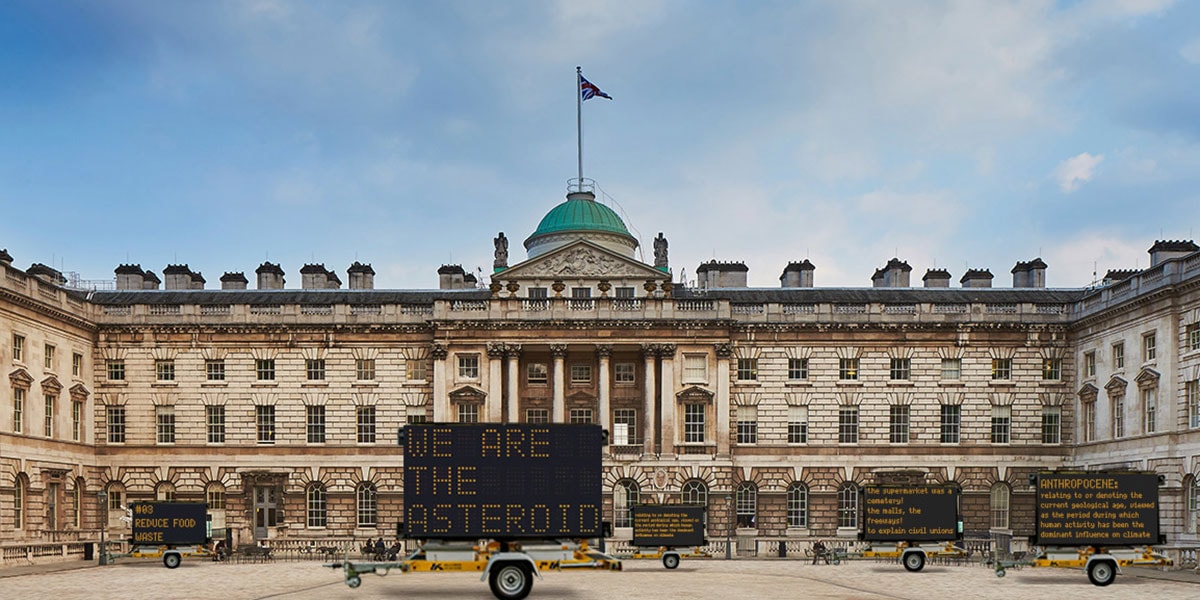Christie’s Education one-day symposium The Role of Art in the Environmental Crisis will discuss the myriad ways artists are responding to global climate change and its consequences. Among the speakers will be contemporary visual artist Justin Brice Guariglia, who shares insights on his recent projects with us in this exclusive Q&A.
Through your large solar-powered LED signs you give opportunity to international activists, poets and philosophers to address the ecological crisis. What was the key message of your largest installation to date at Somerset House in London, which you presented as part of the Earth Day Season 2019?
In the course of my field work and discussions with scientists I turned to philosophy. Philosophy is not great for answers, but it can help us figure out what the correct questions are that we need to be asking ourselves. Philosophy then led me to poetry, and the voices of writers and activists, and I began to see there was a tremendous amount of power in these voices that were coming from the front lines of the issues. It also became more and more apparent that the issues would never be solved by one voice, or one artist — global warming is an issue that requires broad collective action. I felt that art addressing this subject should take a collective approach, and so I decided to gather some of the most powerful writers, poets, philosophers and thinkers that I was encountering and platform their voices collectively in the courtyard. The collective message was that it’s time to re-think our relationship with the natural world.
You have been very active in addressing these ecological issues and raising public awareness. How has your work assisted in decision making about climate change?
It’s hard to say if my work has any real influence over ‘decision making’, I hope it does. What I do know is that the works are getting people’s attention, and getting the broad public to think and talk about these extremely urgent issues, which is an important first step to solving these problems.
Art has become an important channel through which people encounter and engage with issues relating to the environment.
As the world becomes more disorientating, art will play an increasingly critical role in society because of its unique ability to make reality apparent. Art can function as a reorientation machine, a lens that allows us to see the world in 8K rather than 8 bit resolution, making art an indispensable tool for understanding our broken relationship with the natural world. Art can help us question and challenge our existing moral, philosophical and ethical assumptions — in that way, good art can transform us, our society, and our politics.
Speaking about transformation, you are getting ready to launch a second version of the After Ice App, visualizing sea level rise based on data collected by NASA. What will the future look like then?
I make the work because I am hopeful for our future, but we need to turn things around quickly and mend our relationship with the natural world so that we can coexist more symbiotically. To do this, we must raise broader public awareness and encourage action on the issues at all levels, from the grassroots, to businesses and governments around the world. Art is one tool that can help in those conversations, particularly on the individual level. As Timothy Morton likes to say, ‘you’re not guilty, but now that we know, we are responsible’. I hope that when people view my art they feel compelled to join this global dialogue.
The Role of Art in the Environmental Crisis will take place at Christie’s Education, New York, 1230 Avenue of the Americas. Further information and registration details are available on Christie’s Education website.

